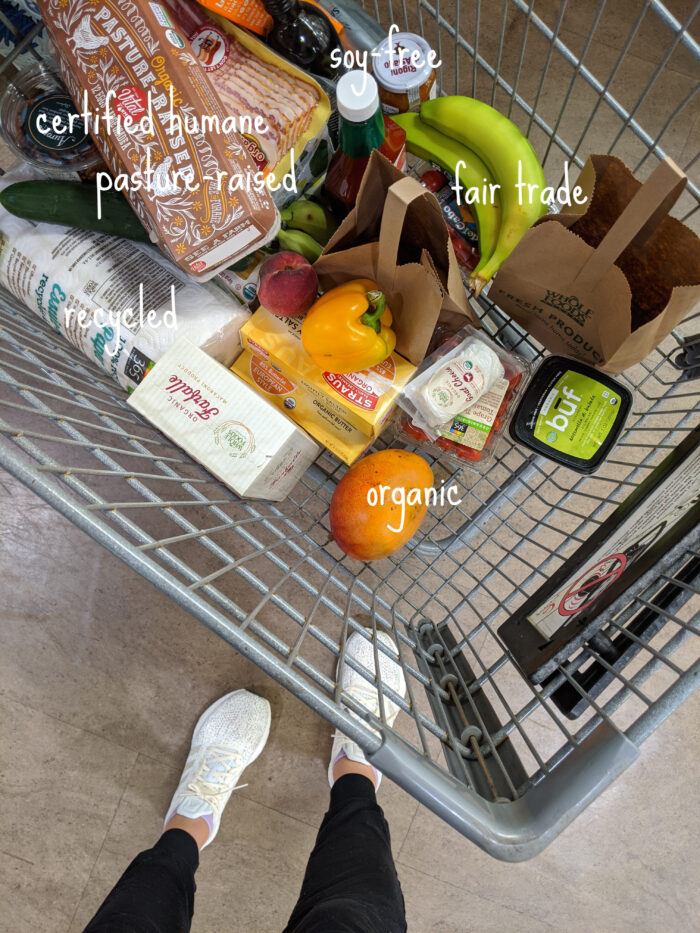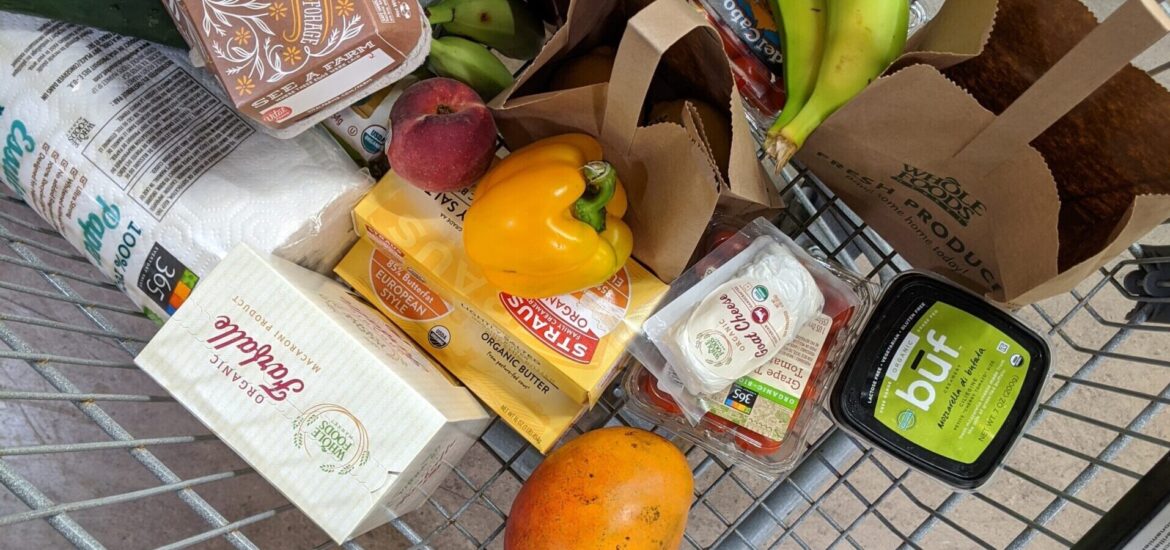It all began with GMO. I can’t remember if I had heard something from someone, or read something somewhere. But either way, one day out of the blue I just knew that I didn’t want to buy any more genetically modified foods, or foods that contained a long list of “ingredients.” Nope, no more science experiments with our produce, no anti-caking agents, no preservatives, and definitely no Yellow No. 5.
But as it turns out (although not completely surprising), we discovered that a lot of things actually taste better because of genetic modification, preservatives, additives or colors. For example, those perfectly sweet and plump strawberries that you can magically buy year-round. And those Oreos. Or even those Kraft Cheese Singles. But for me, the idea that the foods that we were eating weren’t “pure” in a sense just didn’t feel right.
And so we made a change. When we could, we started to only buy foods that were labeled non-GMO, and we chose processed foods that had more “clean” ingredients.
A few months later. . .
Flash forward a few months, and that’s when things really changed. Thanks to that pesky Instagram algorithm, I came across Karalynne Call’s page, @just.ingredients, and I was immediately hooked. Karalynne does a really awesome job of explaining ingredients, and the benefits (or lack thereof) of what is in your food, health, beauty, and home products.
In an instant I became fascinated with how much there was to learn. But also a little horrified as I quickly discovered that even though we were buying “clean” and non-GMO foods, since most of those food items were not also organic, that meant that they were being sprayed with pesticides. Pesticides which happened to have the very same chemical that is in the products that you use to kill grass and weeds and bugs. Yep, you heard me correctly. Chemicals that are being used to kill things are being sprayed on our food.
And that was it, our point of no return. After all, why would we knowingly put any sort of chemical into our bodies, much less a harsh herbicide or pesticide? Because no, in case you are wondering, it’s not just something that you can wash off. It’s in the soil, and those fresh fruits and veggies are literally drinking it up, and we are consuming them. Chemicals and all.

So now after many months of grocery shopping, reading and researching, here’s what I can share: buying organic has changed our lives for the better, and we could never imagine not making this choice. Buying organic foods kind of became our gateway drug to so much more knowledge about the food industry. And knowledge is definitely power.
Food is supposed to be fuel. Food is supposed to nurture our bodies, and to heal them. And so that is what we are focused on – finding ways to fuel our bodies with food that is in its most natural state. And while it does take a lot of awareness, and definitely more time in the grocery store, it’s worth it. And yes, our groceries do cost more than they used to. But again, it’s worth it. Totally and completely worth it.
What We Avoid + Why:
- non-organic foods = harsh herbicides, pesticides + synthetic fertilizers
- GMO foods = scientifically engineered or modified
- anything with soy = HUGE cause of inflammation in the body
- palm oil = linked to deforestation, habitat destruction + human rights issues
- farm raised seafood = often packed with antibiotics + added colors
- fake sweeteners = inflammatory for the body
- growth hormones in dairy products = rBGH is banned in Canada + Europe because of the risks that it poses for both the animals producing + humans consuming
- any colors, chemicals, additives, preservatives, stabilizing agents + anything that you can’t pronounce = if you don’t know what it is, or why it’s in your food, then why eat it? For example, flour’s only ingredient should be wheat. And milk should just be milk.
The Labels We Look For + Why:
- organic = no chemicals or pesticides + always non-GMO
- 100% grass fed meats = no filler or soy in the animal’s diet
- bio-dynamic = the most “natural” form of organic farming
- fair-trade certified = supports ethical practices + fair wages
- a2 dairy products = easier for the body to process and digest
- certified B = companies that balance purpose + profit
- soy-free = supports an anti-inflammatory diet
- pasture raised = happy chickens lay happy eggs
- certified humane = humane treatment of farm animals
- bird-friendly rice = farms providing safe homes for migrating birds
- wild caught = seafood free from chemicals or antibiotics
- certified glyphosate residue free = contains no traces of glyphosate
–
Please keep in mind that although these are the choices that we like to make, we are still human. Although few, we do still use some non-organic products that we haven’t been able to find a replacement for. And we do also realize that some products that we love might never have a replacement. And we’re honestly okay with that. Our goal isn’t to be perfect with our choices, it’s to just do the best that we can. The point in all of this is not to do what someone else is doing, but to do what works for you, and to do what brings you joy!

It was really interesting reading through those articles. I’ve been buying organic dairy and produce, but after your post I’m going to really make more of an effort to buy organic in other areas as well!
Thanks Jill, I’m really glad that you enjoyed it! I know that there was a lot of information to read through…but it’s just because there is so much information out there! But I’m glad that you found some takeaways for your life!!
I definitely did! I started reading more into all of this and have started trying out more organic pantry goods the past week. It has been hit or miss with things, but I feel better that when something doesn’t work out, at least it’s generally a better product for me!
I’m glad to hear that you’ve been trying some things out Jill! And yes, finding the right new product can be a little tricky, but it’s definitely worth it in the long run! I hope that you will find more hits than misses!